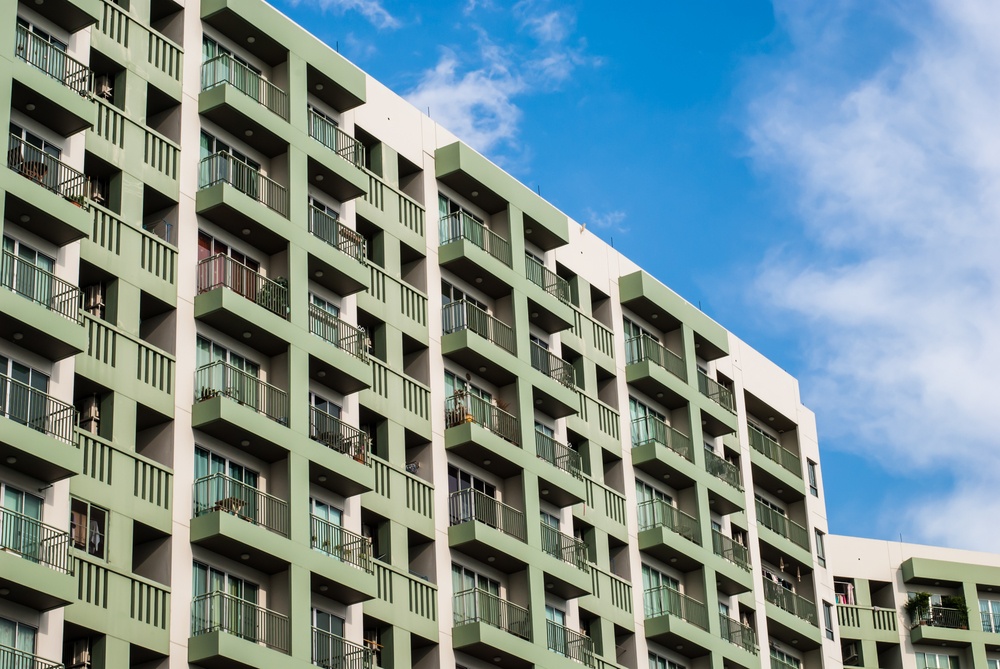Main Challenges When Upgrading Affordable Housing Buildings

Since New York City has the highest construction costs in the world, it should come as no surprise that affordable housing is in short supply. The high rental rates have increased traffic congestion, since many individuals who work in NYC are relocating to surrounding cities with lower housing costs.
NYC authorities use rent regulation to ensure a minimum supply of affordable housing. The owner of a regulated apartment can only increase rent in small amounts that are approved annually by a local board, or after a major capital investment in the property. When rent has increased above a certain value, the apartment is deregulated and can be rented at market rates. The threshold for deregulation is reviewed on January 1 of each year, and it was established at $2,733.75 for the year 2018.
Due to how the rules are set up for rent-regulated apartments, building upgrades are likely to push rental rates above the threshold for deregulation. As a result, the city faces a key challenge: How to improve old rent-regulated apartments, while keeping them affordable?
Identify the most cost-effective upgrades for your building.
Improving Safety and Performance with Building Upgrades
Property owners have a wide range of building upgrades available, and every project is unique. However, in most cases the goal is to improve some aspect of building safety or performance:
- For example, a sprinkler system makes the building safer because since fires can be extinguished automatically when they are still small.
- On the other hand, an HVAC equipment upgrade boosts building performance. Modern HVAC systems have superior control over temperature and humidity, while consuming less energy - comfort improves and operating costs decrease.
These projects improve buildings, but they are often followed by a rent increase to recover capital expenditures. In rent-regulated apartments, the original tenants may miss the benefits of building upgrades if rent is pushed too high for them to afford. To improve affordable housing units while keeping them affordable, priority should be given to low-cost improvements that maximize the benefits per dollar invested.
NYC local laws make some building upgrades mandatory. However, this approach is not viable in rent-regulated apartments:
- When upgrade projects are forced on property owners without a rent increase, their profit margins are affected and they may go out of business. Consider that profit margins are already low in affordable housing; if mandatory upgrades shrink these margins even more, even less investors will be drawn to low-cost housing projects.
- Unfortunately, building upgrades with corresponding rent increases can only be used with moderation, or tenants may be displaced by unaffordable rent payments.
Rent-regulated apartments account for 40% of large multi-family space in NYC, and widespread deregulation would exacerbate the existing issues: displacement and traffic congestion.
Cost-Effective Upgrades for Rent-Regulated Apartment Buildings
Boiler and air conditioner replacements are examples of energy efficiency measures that achieve high savings, but with a significant upfront cost. Their application in rent-regulated apartments is limited, since the resulting rent increase often displaces tenants.
The NYC Urban Green Council has identified many low-cost and high-impact building upgrades that can be deployed successfully in affordable housing projects, without causing a significant increase in rent. The following are some examples:
|
Low-Cost Building Improvements |
Description |
|
Checking and adjusting temperature set points on heating and cooling systems |
When a thermostat is set too low or too high, HVAC equipment consumes more energy than necessary. |
|
Tuning up boilers and furnaces at regular intervals |
This reduces operating costs and increases service life, saving on both gas bills and component replacements. |
|
Improving the building envelope with caulking and weatherstripping |
These are low-cost measures that improve the building’s air-tightness, reducing unwanted heat gain (summer) and heat loss (winter). |
|
LED lighting upgrades |
LED upgrades have some of the shortest payback periods among all possible building improvements, sometimes below one year. Depending on the building’s location in NYC, tenants may even get free LED bulbs through the incentive programs managed by Con Edison. |
|
Insulation |
It can be applied on many HVAC components such as hydronic piping, hot water tanks and steam condensate tanks. |
|
Leak inspection and reparation |
In HVAC installations, leaks of all types cause energy losses because they represent unwanted heat transfer. Fixing leaks improves efficiency. |
|
Building controls |
Just like LED lighting upgrades, building controls increase energy efficiency while having a fast payback period. |
|
Steam system upgrades |
Buildings that still use steam can save with thermostatic radiator valves (TRV) and temperature controls. Steam traps and master vents can be inspected, to be repaired or upgraded as needed. |
Building upgrades for affordable housing have a higher chance of success if they benefit both landlords and tenants.
- Energy efficiency measures for common building systems are the most attractive for property owners, since they provide a return on investment with no need to increase rent.
- Tenants are more likely to support measures where the savings are shared with them, and where rent payment is unaffected.
A professional assessment of your property is strongly recommended before any building upgrades. Engineering consultants can identify building conditions that are against local codes and safety issues that need urgent attention. They can also propose cost-effective energy efficiency measures, according to your building conditions.

Anuj Srivastava
Anuj Srivastava is a principal partner at NY Engineers. He is known for his MEP franchise market knowledge. Anuj is currently leading a team of 100+ MEP/FP engineers and has successfully led over 1500 franchise projects in the US.
Join 15,000+ Fellow Architects and Contractors
Get expert engineering tips straight to your inbox. Subscribe to the NY Engineers Blog below.



